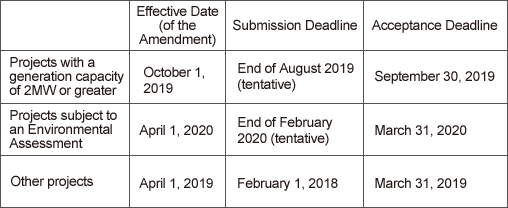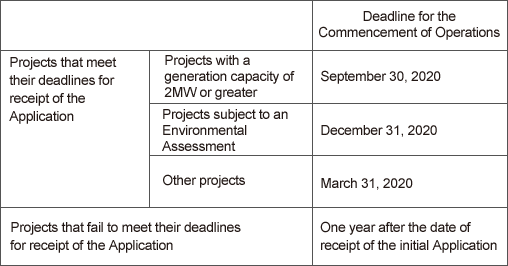1. Overview of the Criminal Procedure in Japan
When a crime is committed, investigative authorities, such as public prosecutors and police officers (the ''Investigative Authorities''), would investigate the case, and the prosecutor in charge of the case will decide whether or not to prosecute the suspect. If the suspect is prosecuted, then a judge or a panel of judges will examine the case, including the evidence, and decide whether or not the accused is guilty and what punishment is appropriate.
Under the Constitution of Japan, judges are independent from any national administrative agency and must make their decisions in accordance with their conscience, and are bound only by the Constitution and applicable laws. Likewise, prosecutors must make their decisions from a fair and neutral standpoint. Defense counsels must act to defend the suspect/accused.
2. Investigation and Detention
The Investigative Authorities conduct the investigation, which includes interrogation of the suspect, interview of the victim or other relevant persons, search of the house of the suspect and other relevant places, and seizure of articles of evidence. The search, seizure and related acts are conducted without the consent of any relevant person based on a warrant issued by a court.
Subject to the satisfaction of certain legal requirements, the suspect is placed in custody; in other words, he/she is arrested and detained. The legal requirements include the existence of probable cause that he/she committed a crime, that the suspect has no fixed residence, or that there is probable cause that he/she may conceal or destroy evidence, or flee.
The ordinary procedure for detaining a suspect is as follows: within 48 hours after the arrest, the police officer refers the suspect to a prosecutor with the relevant documents; then within 24 hours after receiving such referral of the suspect, the prosecutor files a request for detention of the suspect with a court; and the court decides whether to approve the detention. The first detention period is 10 days. If unavoidable circumstances exist, then the judge may extend the detention period up to another 10 days upon the request of the prosecutor. This means that the total period to detain a suspect from the day of the arrest to the end of the detention in the investigation stage is at most about 23 days.
Before the above detention period ends, the prosecutor will decide whether the suspect should be prosecuted or released. There are two types of prosecution: a request for trial (hearings in open court) and a request for summary proceedings (an examination of documents only by the judge). If the suspect is believed to have committed more than one crime, then the prosecutor may release the suspect for one crime, and then arrest and detain him/her again for another crime, and conduct the investigation for such other crime.
According to the statistics of the Ministry of Justice, of the total cases decided by the prosecutors' offices throughout the country in October 2018 (104,051 cases in total, including decisions other than whether or not to prosecute, such as transfers to other prosecutors' offices), 28,920 cases (approximately 27.8%) were prosecuted (of such cases, trials were requested for 7,766 cases (approximately 7.5%)) while 56,003 cases (approximately 53.8%) were not prosecuted.
When the Investigative Authorities interrogate a suspect, his/her defense counsel is not permitted to accompany him/her, but the interrogation process is audio or video-recorded in certain cases. Interpreters are engaged if the accused does not speak Japanese. The suspect has the right to remain silent, and the Investigative Authorities must not do anything that may interfere with the voluntary acts of the suspect, such as by using compulsion, torture, threats or inducements. Based on the results of the interrogation, the Investigative Authorities will prepare a written record of the statements of the suspect. The suspect will review the record and, if he/she considers it to be correct, then he/she affixes his/her name and seal on it. However, if it turns out that the suspect affixed his/her name and seal against his/her will, then the judge will not permit the prosecutor to rely on such record as evidence in the trial.
Before the prosecutor decides on prosecution, requests for detention and the like, the defense counsel acts on behalf of the suspect by, for example, stating his/her opinions on the case, and collecting evidence by meeting the victim(s) and relevant parties as well as interviewing the suspect.
3. Trial
The trial is held in open court where observers can attend, but its broadcast by television or other media is not permitted. If a trial is requested while the accused is under detention, he/she will remain detained.
At trial, the case is heard by one judge, a panel of three judges or, in some cases, three judges and six lay judges (saiban-in).1 They examine the evidence, and listen to statements of the accused as well as the opinions of the prosecutor and the defense counsel. Based thereon, they will decide whether or not the accused is guilty and what punishment is appropriate. The prosecutor and the defense counsel will each submit documentary evidence to the court and question witnesses. If the accused does not speak Japanese, then a court interpreter will interpret the proceedings of the trial. Also, documents written in a foreign language must be translated into Japanese.
Punishments include the death penalty, imprisonment with labor, and fines. Under certain circumstances (for example, a sentence of imprisonment with labor for three years or less), the service of the sentence may be suspended.
Japan has a three-tier court system. According to court statistics, a trial at the district court of first instance takes an average of approximately 2.6 months for cases where the accused admitted to the crime, and where the accused denied the commission of the crime, approximately 8.9 months for cases before a sole judge, or 13.3 months for cases before a panel of judges.
4. Related Systems
(1) Interviewing the suspect/accused, and the sending or receiving of documents or articles
Defense attorneys and other persons may interview the suspect/accused who is under detention. However, interviews by any person other than defense attorneys must be held in the presence of an official, such as a police officer, and are permitted only for a limited length of time. Moreover, interviews, and the sending or receiving of documents or articles are prohibited or restricted if there is probable cause that the suspect/accused may, among others, conceal or destroy evidence, or flee.
(2) Bail
After the prosecution is instituted, the accused, his/her defense counsel, spouse or other persons prescribed by law may request the court for bail. In such event, the court must release the accused except in some instances, such as when the crime committed by the accused is subject to a heavy penalty under the law. However, even in such exceptional cases, the court may still release the accused taking into account whether or not there is any probable cause that the accused may conceal or destroy evidence, or flee, or considering the seriousness of the potential harm that may be suffered by the accused due to continued detention with respect to his/her health, or his/her financial condition, social life, preparation for his/her defense, etc.
Before the court decides to grant bail, the defense counsel in many cases presents his/her opinions to the judge by having a meeting with the judge or submitting a written opinion. To grant bail, the court must order the accused to pay bail. The court may also impose other conditions, such as restrictions concerning the residence of the accused. If the accused fails to appear in court for trial, flees, conceals or destroys evidence, or fails to satisfy the aforesaid conditions, or if there is any other reason, then the court may cancel and confiscate the bail.


 THE CRIMINAL PROCEDURE IN JAPAN
THE CRIMINAL PROCEDURE IN JAPAN
 Japan's New Immigration Policy
Japan's New Immigration Policy Renewable Energy Development:
Renewable Energy Development: 







